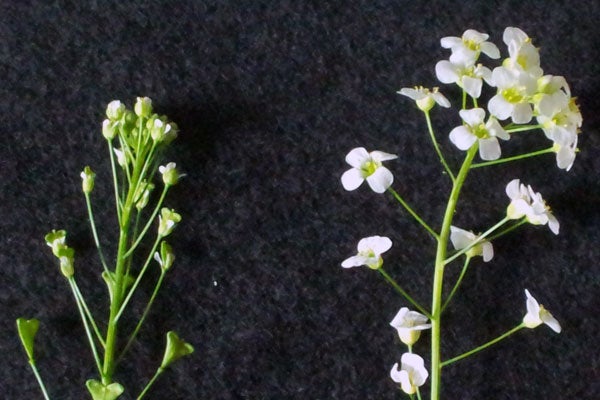
Self-fertilizing plants contribute to their own demise
Published: June 10, 2013
It's called self-fertilizing or "selfing" and, although it guarantees reproduction, a new study shows plants that practise this strategy face harmful mutations and possibly even extinction.
Many plants are self-fertilizing but the study, published in the scientific journal Nature Genetics, found that this leads to reduced diversity and the accumulation of harmful mutations across the plant's genome that can arise more rapidly than previously thought..
An international consortium led by Stephen Wright in the Department of Ecology and Evolutionary Biology at the University of Toronto and Detlef Weigel at the Max Planck Institute for Developmental Biology sequenced the genome of the self-fertilizing plant species Capsella rubella, commonly known as Red Shepherd’s Purse. They found clear evidence that harmful mutations were accumulating over the species’ relatively short existence.
“The results underscore the long-term advantages of outcrossing, which is the practice of mating between individuals, that gives us the wide array of beautiful flowers,” said Wright. “Selfing is a good short-term strategy but over long timescales may lead to extinction.”
Red Shepherd’s Purse is a very young species that has been self-fertilizing for fewer than 200,000 years. It is therefore especially well-suited for studying the early effects of self-fertilization. By contrasting Red Shepherd’s Purse with the outcrossing species that gave rise to it, the researchers showed that self-fertilization has already left traces across the genome of Red Shepherd’s Purse.
“Harmful mutations are always happening,” said Wright. “In crops, they could reduce yield just as harmful mutations in humans can cause disease. The mutations we were looking at are changes in the DNA that change the protein sequence and structure.”
The findings represent a major breakthrough in the study of self-fertilization.
"It is expected that harmful mutations should accumulate in selfing species, but it has been difficult to support this claim in the absence of large-scale genomic data,” says lead author Tanja Slotte, a past member of Wright’s research team and now a researcher at Uppsala University. “The results help to explain why ancient self-fertilizing lineages are rare, and support the long-standing hypothesis that the process is an evolutionary dead-end and leads to extinction."
The researchers said that with many crops known to be self-fertilizing, the study highlights the importance of preserving crop genetic variation to avoid losses in yield due to mutations accumulating.
The findings are reported in the paper “The Capsella rubella genome and the genomic consequences of rapid mating system evolution” in Nature Genetics this week. Other lead collaborators on the study included researchers from the Max Planck Institute in Tübigen, Germany and the US Department of Energy's Joint Genome Institute. The research is supported by funding from the US Department of Energy, the Max Planck Institute, Genome Canada and Genome Quebec.
Sean Bettam is a writer with the Faculty of Arts & Science at the University of Toronto.



